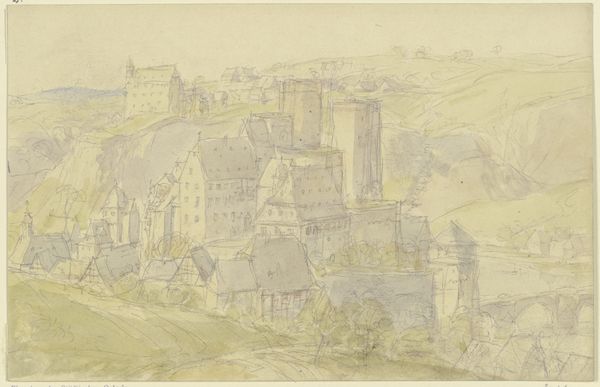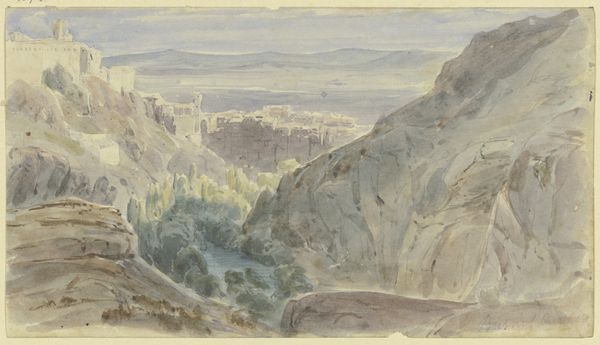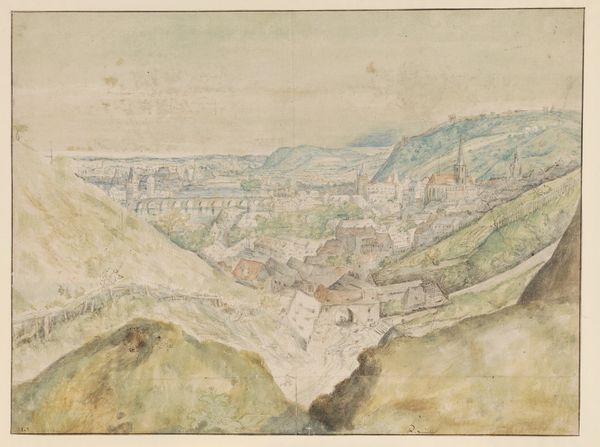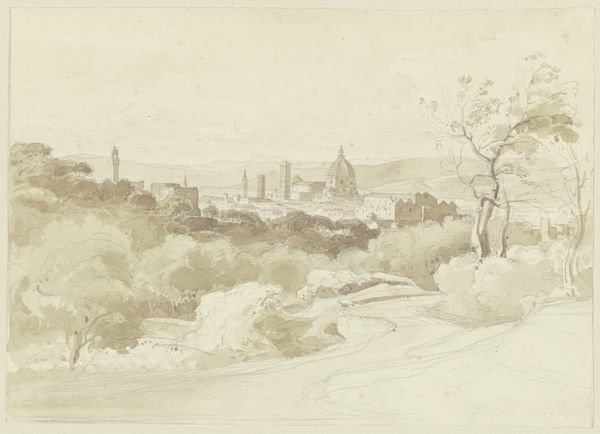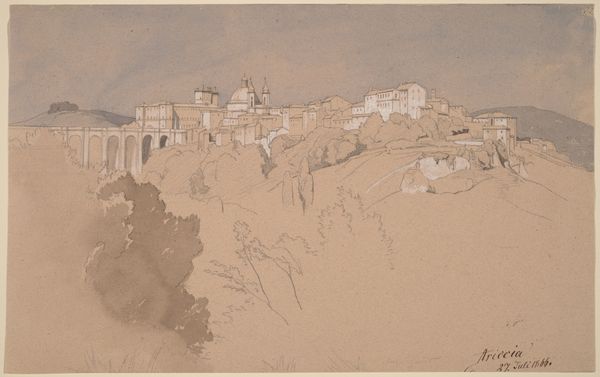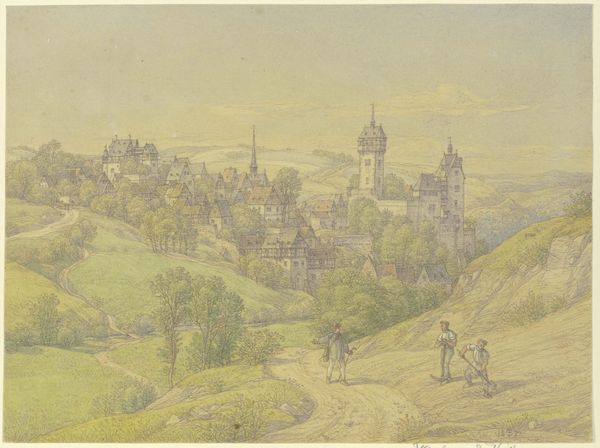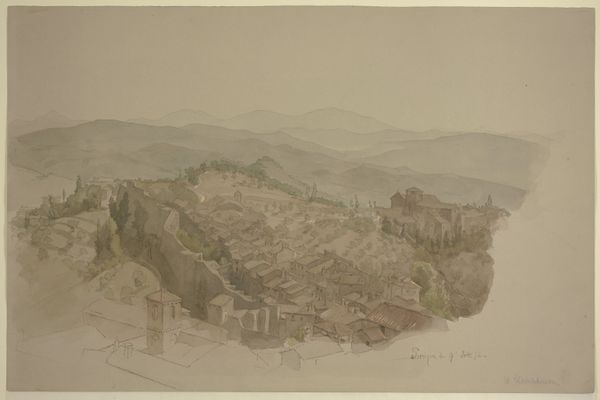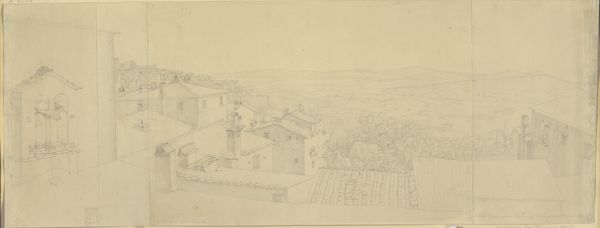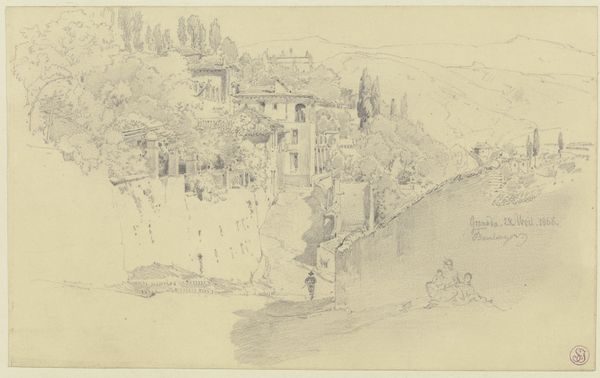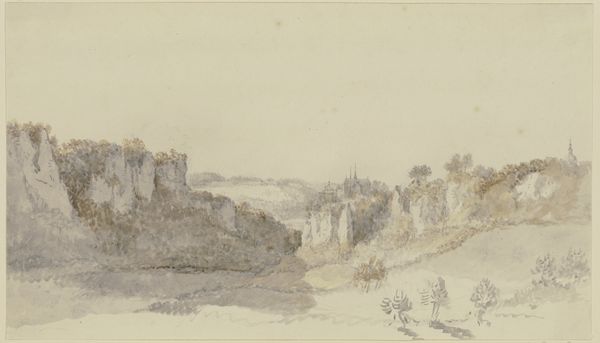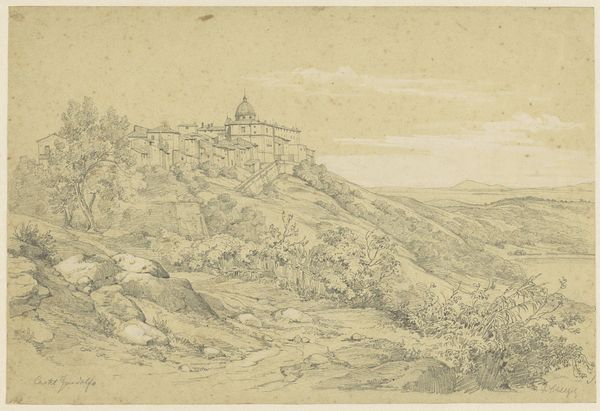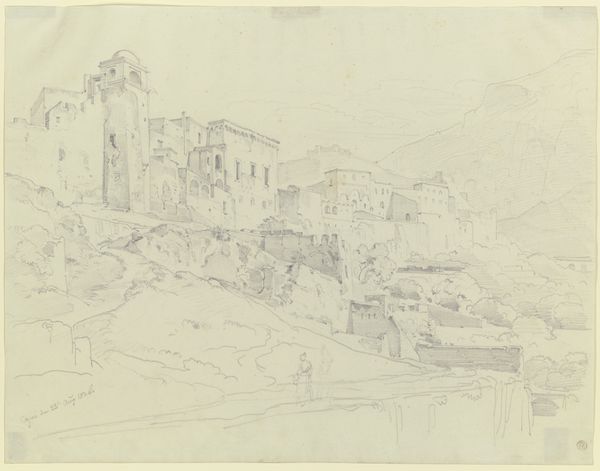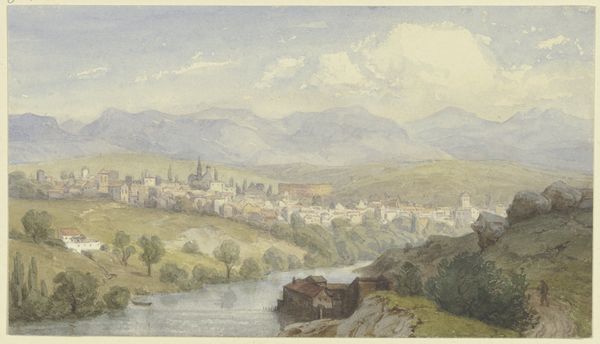
drawing, paper, watercolor, pencil
#
drawing
#
16_19th-century
#
impressionism
#
pencil sketch
#
landscape
#
paper
#
watercolor
#
romanticism
#
pencil
#
watercolor
Copyright: Public Domain
Editor: So, this piece is called "Landscape near Segovia," a watercolor and pencil drawing by Karl Peter Burnitz. The hazy washes give it an ethereal quality, but I wonder what story it's really trying to tell. What jumps out at you about this work? Curator: Well, consider the materials themselves. Pencil and watercolor on paper; these were incredibly accessible materials in the 19th century. This speaks to artmaking as a form of recording, documenting one’s travels. Were these materials deployed democratically or as tools of privilege in that era? Who had the leisure to create landscapes? Editor: That's interesting. It does feel like a quick sketch, almost like a postcard. So, you're saying that the simplicity of the materials speaks to a wider accessibility, but that maybe only a certain class of people actually *had* access? Curator: Exactly! Think about the act of observing and rendering a landscape. This wasn’t a neutral act. Land ownership, travel, artistic training – these were all bound up in systems of power. Who owned this Segovia landscape? Who benefitted from it? And how might that influence Burnitz’s depiction? Does it critique it or glorify it? Editor: I never thought of landscape painting as having that kind of weight! So, by looking at the *how* and *why* this artwork was made, we can start to understand more about the social dynamics of the time. Curator: Precisely. Consider the pigment sources, too. Were they locally sourced, reflecting regional trade, or imported, pointing to globalized exchange? Even the paper itself tells a story of production and consumption. Editor: That really changes my perspective. I’ll definitely be looking at materials differently from now on. Thanks! Curator: And I'll be thinking more about that sense of immediacy you picked up on – how that 'postcard' feel both reflects and potentially obscures those complex material and social relationships.
Comments
No comments
Be the first to comment and join the conversation on the ultimate creative platform.
